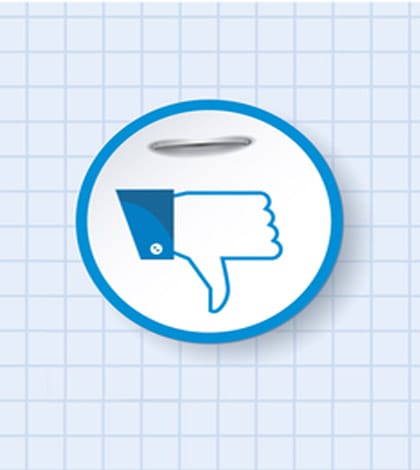We’ve come a long way social media. Now that the experiment is over, let’s take a look at one dozen things marketers need to stop in 2015.
We’ve learned a lot since 2007 when marketers recognized social media as the next frontier. You’ve proven to be explorers, bravely Tweeting where no brand has gone before. We’ve watched each other experiment and win big. We’ve cringed as other not-so-well-thought-out experiments went down in flames leaving the Internet buzzing in the worst way. The good part about where we are is we’ve being doing this long enough to establish best practices. That doesn’t mean it has been any less challenging to keep up with it all. Social media is in a constant state of flux with any single feature change having the potential to make a marketing plan irrelevant.
Let’s take social media marketing into 2015 with a few things that marketers need to stop.
1. Referring to Facebook as “our community”
Back in the day, Facebook was among the first channels to bring together brand community. What happened online now impacted offline company operations from customer support, feedback and customer communications. These communities were often created by fans themselves. As companies have flooded Facebook with Pages and the company has since gone public, the community environment has been lost. Facebook Pages have evolved from putting fans front and center to brand. More importantly, it has become an advertising platform. Organic reach to fans of your Page messages now ranges a meager 1%-3%. So stop calling Facebook your community already, if you do not have an advertising budget you may as well not be there at all.
2. Buying Facebook fans
On the topic of Facebook advertising, there is one very important thing marketers must stop doing. Purchasing Facebook Page likes. Why? As mentioned in number one, few of these people will ever see your messages even though they’ve liked your Page. The biggest reason is to come. Facebook recently announced that any promotional messaging will not be served up to Page fans unless it is advertised beginning in January.
Fans should represent people who really want to do business with you. The best approach is to build fans organically from your customer base, employees and other advocates of your company (I’m sure mom was first to like your new page!). When you buy likes from Facebook or any other source you are watering down the little amount of organic reach you do get. This video explains it best.
3. Inserting brands into conversations they don’t belong
Taking risks is a must for cutting through the noise in social media and getting engagement. It’s great to see brands score with right-timed creative because as social media marketers we’re always rooting for each other. Read How Oreo’s brilliant blackout tweet won the Super Bowl. The flip side of that are the many more attempts that leave people wondering “what the hell just. Happened.” When it comes to current events, brands have racked up a track record of lacking tact. Killing the trust they’ve built with their audience.
No, we do not want to participate in your 9/11 day sale.
Before you jump into a current event or trending hashtag, consider the context and be sure it aligns with your business and voice.
4. Saying stupid stuff on Twitter
Please make it stop.
There are a few ways to prevent finding yourself in a PR crisis because someone posted something thoughtless to Twitter. Start by putting communication guidelines in place for your community manager that allow them the freedom to engage in realtime while staying on voice and topic. The weekly oopsies coming out Twitter by well-respected brands are more often than not blamed on being hacked or the result of an accidental message meant for a personal account. While I only believe about 50% of these stories, I can tell you it is easily prevented with the right processes in place. Start by using a secure password protocol (e.g. not “mybrand14”) that is changed every time there is employee turn over. The second part of the solution is to require anyone who touches social media accounts to login using a professional management tool. Not the Twitter app.
5. Reckless Twitter Q&A
Everyone has heard about the Cosby scandal by now. Did you know that the catalyst for this story resurfacing was a Twitter campaign that backfired? Reckless Twitter chats, often in the form of live Q&A, are actually quite common. Dr. Oz experienced a Twitter Q&A that backfired the same week. Despite the horrendous number of trolls waiting for something to pounce on, most brands get through unscathed. If Q&A or a more open conversation with your Twitter audience is a must, make sure you’ve done your due diligence with PR. Start by listening using a professional tool that can pull historical conversations as well as current sentiment. Dig into the past to find if there’s a skeleton waiting to resurface. Or, they will.
6. Pawning social media off to the kid that uses the Facebook
Another reason stupid stuff is posted to social media is that it is not taken seriously enough to properly staff. Interns do not belong on the front lines of your brand. Nor does some admin in the company who social media was pawned off on because they happen to Facebook real good with their friends. Social media has grown up as a marketing practice, in the ranks of hiring a “good SEO” or copywriter. If you care about your brand, staff accordingly.
7. Creating content that nobody cares about
There’s A LOT of content out there. I’d venture to say that 2013-2014 were the years of content marketing. It’s great that so many brands have decided to publish their knowledge. It improves communications, helps SEO, and gives us something to engage around in social media. If however, you do not have the passion, time and resources to put into publishing, you should just stop. Bad content is as good as no content. Because nobody cares.
8. Meme photos
If your central content strategy is irrelevant quote photos splattered across Facebook and Instagram… Just stop it. It hurts all of us to watch.
9. Posting photos not meant for Instagram to Instagram
If Instagram is in your 2015 playbook (and it very well should be!) just make sure that you have a plan to support the necessary photography. Not iStock. Not SomeeCards. It’s a great place for visual brand storytelling, a behind-the-scenes sneak peek, and captivating customers with authentic photography of people, food and products.
10. Telling your social media person to get on Google+
Google+ was a nice experiment.
11. Torturing your social media manager about ROI
Let’s put this to rest. Social media is measurable and you can’t justify your way out of not doing it. As a digital medium it is inherently more measurable than traditional tactics that companies dump tens of thousands of dollars into without question (huh hmm PR, print, TV…). Understand where social media sits in the customer experience. Keep in mind that social media is as measurable as the tools, systems and data you have in place to measure it with.
12. Ignoring the mobile experience
As many as 78% of Twitter and 83% of Facebook users access it with their mobile device. Instagram is purely a mobile platform. If you haven’t made the mobile experience a top priority by now, put it on your 2015 checklist. Think beyond a responsive site to social media images, mobile advertising, shopping and white papers.
Social Media Tactics 2015
Anything to add? I bet. Leave a comment telling us what’s on your list of things marketer need to quit in 2015.




2 Comments
This list scares me… I can’t believe some of them are still happening, like buying Facebook fans – what? That was never a good idea! Lots of great info here Melonie, going to *ahem* SHARE it with others (aka force others to post on their office walls!)
I see this stuff all the time and I could keep adding to the list. It’s interesting that Facebook continues to sell like campaigns. I can understand building audience on Twitter because there’s no filter but for Facebook to offer this, what’s the point? Good luck with it! -Melonie